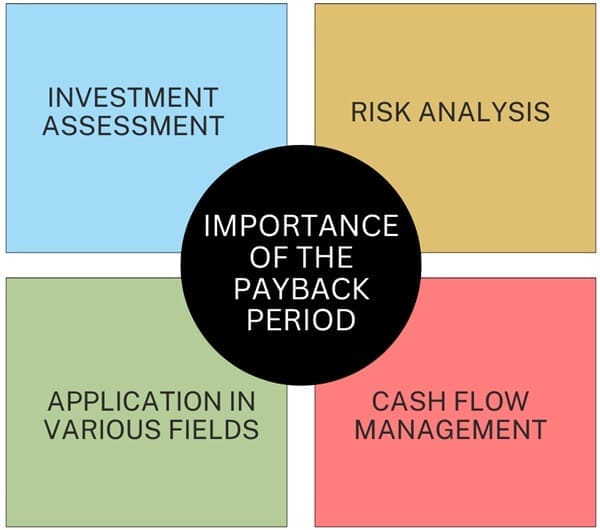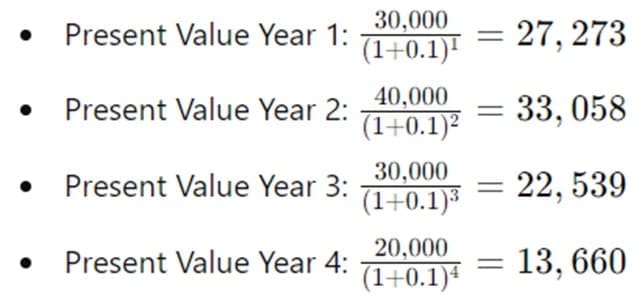Corporate finance is an intricate domain revolving around capital budgeting, which is essential for making strategic financial decisions. Among the various methods used to evaluate investments, the payback (PB) period stands out due to its simplicity and straightforwardness.
Corporate financial analysts must determine the profitability and feasibility of different investments or projects, and the payback period provides a quick measure to do just that.
Table of contents
Definition of Payback Period
The payback period is a metric used to determine the length of time required to recover the initial investment made in a project. It is calculated by dividing the initial investment by the annual cash inflows generated by the investment.
This period indicates how long it will take for an investment to “payback” its initial cost, making it a useful tool for assessing the desirability of potential investments. Generally, shorter payback periods are preferred as they imply quicker recovery of the invested capital.
Importance

The payback period is significant in several ways:
- Investment Assessment: It helps investors and managers make quick judgments about the viability of investments.
- Risk Analysis: Shorter PB periods reduce the time during which the investment capital is at risk, thus lowering exposure to uncertainty.
- Cash Flow Management: For businesses with tight cash flows, projects with shorter PB periods are more attractive as they promise quicker cash recovery.
- Application in Various Fields: While primarily used in financial and capital budgeting, the payback period is also applied in evaluating energy efficiency projects, maintenance, and technological upgrades.
Limitations

Despite its usefulness, the PB period has notable limitations:
- Ignores Time Value of Money: The basic PB period calculation does not account for the time value of money, which means it does not consider that money received in the future is worth less than money received today.
- Neglects Post-Payback Period Cash Flows: It does not consider the profitability of a project beyond the PB period, potentially overlooking long-term benefits.
- Simplicity: The method’s simplicity can be a drawback as it might not capture the complexity of real-world cash flows and investment scenarios.
Calculating the Payback Period
The formula for calculating the payback period varies depending on whether the cash inflows are even or uneven.
Payback Period Formula – Even Cash Flow
When the annual cash inflow is constant, the payback period can be calculated using the formula:

For example, if a project requires an initial investment of $25,000 and generates annual cash inflows of $10,000, the payback period is:

Example: Even Cash Flow
ABC Company plans to purchase a machine for $25,000 with an expected annual cash inflow of $10,000 and a useful life of 10 years. If the maximum desired payback period is 3 years, the calculation would be:

The investment is considered desirable since 2.5 years is less than the maximum desired payback period.
Payback Period Formula – Uneven Cash Flow
For projects with uneven cash inflows, the payback period calculation involves summing the cash inflows until the initial investment is recovered. The formula is:

Where:
- AAA is the last period with a negative cumulative cash flow.
- BBB is the absolute value of the cumulative net cash flow at the end of period AAA.
- CCC is the total cash inflow during the period following AAA.
Example: Uneven Cash Flow
Consider an investment of $200,000 with the following annual cash inflows:
- Year 1: $70,000
- Year 2: $60,000
- Year 3: $55,000
- Year 4: $40,000
- Year 5: $30,000
- Year 6: $25,000
To compute the PB period, we calculate the cumulative cash inflows:
- End of Year 1: $70,000
- End of Year 2: $130,000 ($70,000 + $60,000)
- End of Year 3: $185,000 ($130,000 + $55,000)
By the end of Year 3, the cumulative inflow is $185,000, and we need an additional $15,000 to recover the initial investment:

The investment is not deemed desirable since 3.375 years is longer than the desired 3 years.
Advantages and Disadvantages
Advantages:
- Risk Assessment: Provides a quick indication of risk by showing how long the investment capital is at risk.
- Simplicity: Easy to calculate and understand, making it accessible to a wide range of users.
- Liquidity Improvement: Helps identify investments that can quickly improve cash flow.
Disadvantages:
- Ignores Time Value of Money: Does not account for the present value of future cash flows.
- Overlooks Long-term Profitability: Does not consider cash inflows beyond the PB period.
- Oversimplified: This may not capture the complexity of real-world investment scenarios, such as varying cash flows and additional investments.
Discounted Payback Period
To address the limitation of ignoring the time value of money, the discounted payback period is used. This method discounts future cash flows to their present value before calculating the payback period, providing a more accurate measure of investment recovery time.
Discounted Payback Period Calculation
- Estimate Future Cash Flows: Project the cash inflows for each period.
- Discount Cash Flows: Use a discount rate to calculate the present value of each cash inflow.
- Cumulative Present Value: Sum the discounted cash inflows until the initial investment is recovered.
Example: Discounted Payback Period
Assume an investment of $100,000 with the following cash inflows and a discount rate of 10%:
- Year 1: $30,000
- Year 2: $40,000
- Year 3: $30,000
- Year 4: $20,000
First, discount each cash inflow:

Next, calculate the cumulative present values:
- End of Year 1: $27,273
- End of Year 2: $60,331 ($27,273 + $33,058)
- End of Year 3: $82,870 ($60,331 + $22,539)
- End of Year 4: $96,530 ($82,870 + $13,660)
The discounted payback period falls between Year 3 and Year 4:

Final Words
The payback period is a valuable tool for corporate financial analysts, providing a quick measure of how long it will take to recover an initial investment. Despite its simplicity and ease of use, it is crucial to be aware of its limitations, such as ignoring the time value of money and overlooking long-term profitability.
The discounted payback period offers a more refined approach by accounting for the time value of money, making it a better metric for investment evaluation. Ultimately, while the payback period is an essential component of capital budgeting, it should be used in conjunction with other financial metrics to make well-rounded investment decisions.


















